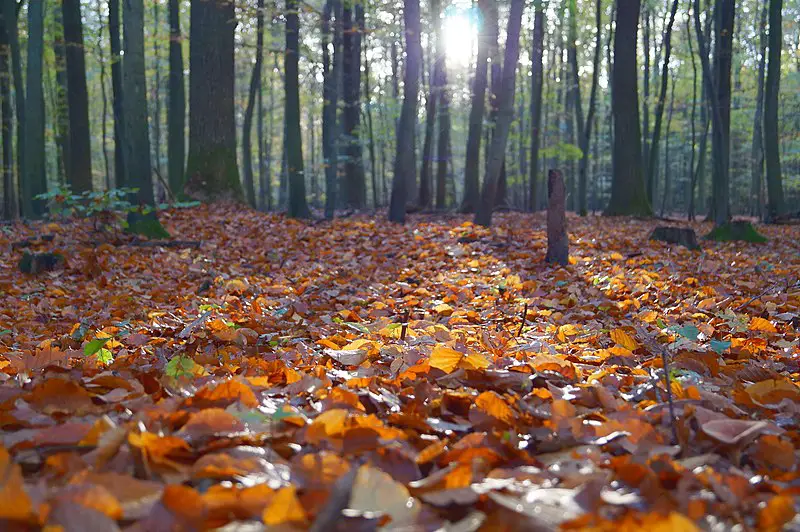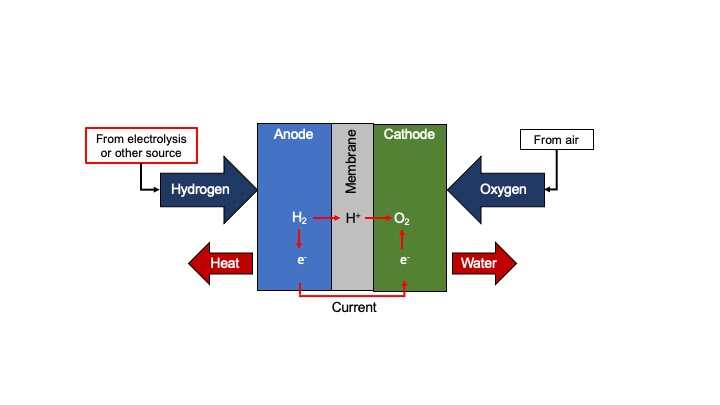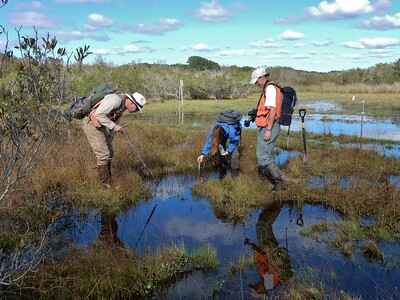Carbon Cycle Definition, Types and Importance Explained
Carbon cycle is the sum total of all processes and forms in which carbon is exchanged among the various ecosystems on Earth. This article discusses carbon cycle definition types and importance, as outlined below;
-Carbon Cycle Definition: 5 Ways to Define the Carbon Cycle
-Why the Carbon Cycle is Important
Carbon Cycle Definition: 5 Ways to Define the Carbon Cycle
Carbon cycle, also known as carbon-geochemical cycle; is an ecological concept that details the natural and artificial recycling of carbon in solid, liquid and gaseous forms, across the various segments of the Earth's ecosystems.
The above is a simple carbon cycle definition, that takes into account the most basic details which constitute a carbon natural-recycling chain. It must be noticed that the word 'carbon' is always used in place of 'elemental carbon', to indicate that naturally-occurring carbon is rarely found in its native or elemental form.
Rather, the carbon cycle deals with carbon as an abundant component is naturally-occurring materials like rocks, biomass, and energy resources like petroleum and coal; as well as a byproduct of biogeochemical processes like biodegradation.
Processes involved in the carbon cycle may also be manmade or human-driven, often occurring as a result of activities in the course of urbanization, electricity generation, manufacturing, and industrial development.
Asides their causative activities, these manmade processes include the combustion of fuel that yields carbon-rich greenhouse gases like carbon dioxide and methane [1]. As a matter of fact, these manmade processes define the environmental impacts of carbon as an element.
To better understand the carbon cycle and its relevance to the abiotic and biotic components of our environment, a glance at the (natural and artificial) processes of carbon cycles is important.
Below is an alternative carbon cycle definition that makes due reference to some of these processes;
Carbon cycle is a model used to summarize the transitions, conservation, and functions of carbon on the Earth's surface, through multiple inter-dependent processes like respiration, photosynthesis, combustion, decomposition and excretion that enable carbon to be used in various forms and contexts [2].
The four(4) main carbon cycle processes are decomposition, combustion, respiration and photosynthesis (in no particular order) because these processes are involved in the manufacture of organic carbon from gaseous inorganic carbon, and the conversion of organic carbon back to inorganic gaseous carbon.
Solar energy is also needed by plants to produce organic carbon from inorganic carbon dioxide, and it is converted through the same process into chemical bioenergy that can be transferred from one living organism to another. What this means is that the carbon cycle is fully ingrained in the energy-transfer loops that make ecosystems like forests and deserts sustainable.
The carbon cycle is central to other ecologic models like food chains, biomass pyramids and energy pyramids.
It must be noted at this point that there is a difference between processes of the carbon cycle, and the carbon cycle process. The latter is mentioned in the alternative carbon cycle definition below, alongside steps that make up the cycle process;
Carbon cycle is a summarized presentation of the process that enable carbon to be used as a source of food and energy for organisms in the ecosystem, as outlined in a series of steps that include; photosynthetic assimilation, biomass production (by autotrophic producers), biomass consumption (by heterotrophic consumers), organic biodegradation, and inorganic carbon release.
The processes of carbon cycles may then fit into the various steps in the carbon cycle process, such as photosynthesis occurring in step 1 and biodegradation in step 4.
Based on the trend of processes and steps involved, multiple types of carbon cycles can be identified. The alternative carbon cycle definition given below, makes reference to these types;
Carbon cycle is a concept describing cyclic trajectory along which carbon and its compounds are exchanged among the geosphere, hydrosphere, atmosphere and biosphere, according to any of two models including short-term (or fast) and long-term (or slow) carbon cycles.
Lastly, the carbon cycle definition is outlined to include some carbon cycle examples;
Carbon cycle is a biogeochemical system and sequence whereby carbon compounds are produced, transformed and consumed on the Earth's surface, as can be observed in examples like; limestone chemical weathering by co2-rich carbonic acid, photosynthetic carbon-capture and biomass production, bioenergy and carbon dynamics in feeding and respiration, fossil fuel combustion with carbon thermal decomposition, carbon release by microbial decomposition.
Types of Carbon Cycles
The two(2) types of carbon cycles are; short-term or fast carbon cycle, and long-term or slow carbon cycle respectively. Each of them is discussed briefly below;
1). Short-Term Carbon Cycle (as one of the Types of Carbon Cycles)
The fast or short term carbon cycle, is a type of carbon cycle that is defined by relatively-rapid transitions of carbon from photosynthetic capture to its release into the atmosphere as an inorganic gaseous component.
Environmental systems that play a prominent role in the fast carbon cycle include aquatic ecosystems (freshwater and marine); soils, and all kinds of autotrophic organisms.
The interaction between carbon sinks and sources in a short-term carbon cycle is dominated by processes that are of brief, temporal effect, especially in comparison to processes that occur in the slow or short-term carbon cycle.
Such processes include surficial carbon sequestration and biodegradation in vegetation-rich biomes with high humidity and temperature. The less-temporal forms of carbon sequestration such as those in deep grassland soils, temperate forests and tundra permafrost, are all linked to slow carbon cycle.
The amount of carbon that moves through the fast carbon cycle ranges from 10^15 to 10^17 grams annually (equivalent to 1,000 and 100,000 million metric tons). In some studies the range may differ slightly around these values.
Fast carbon cycles have a total duration that ranges from few minutes to a few years, depending on the scale at which they are operating, or being studied.

2). Long-Term Carbon Cycle (as one of the Types of Carbon Cycles)
The slow or long term carbon cycle, is a type of carbon cycle that is comprised of processes and carbon sources that are complex and/or large; and therefore more time-consuming and effective than short-term carbon cycling processes.
A process that is considered slow cycling in the carbon cycle is one which is part of a long, complex chain of events leading to the capture of atmospheric carbon, its long-term storage, and subsequent return to the atmosphere.
A classic example of slow carbon cycle processes is sequestration of carbon in relatively-stable soil, such as permafrost. This type of carbon storage can remain effective for thousands to millions of years.
Examples of long term carbon cycling include formation of fossil fuels from biomass that is buried underground in terrestrial and aquatic zones; and the subsequent combustion of these fossil fuels to release carbon dioxide.
Because it stretches over several years, the slow carbon cycle has a relatively-low annual productivity compared to fast cycle. On average, between 10^13 and 10^14 grams of carbon (equivalent to 10-100 million metric tons) move through the slow carbon cycle per year.
The main difference between fast and slow carbon cycles is their longevity; where fast or short-term cycles have a much shorter lifespan than slow or long-term cycles.
Below is a table summarizing the difference between long term and short term carbon cycles;
| Comparison Criteria | Long Term Carbon Cycle | Short Term Carbon Cycle |
| Average Lifespan Range | Thousands to Millions of Years | Few Minutes to Few Years |
| Amount of Carbon Involved | 10^13 to 10^14 grams | 10^15 to 10^17 grams |
| Prominent Process(es) | Carbon Sequestration | Photosynthesis, Biodegradation |
| Example(s) | Fossil Fuel Formation and Subsequent Combustion | Plant lifecycle from photosynthetic growth to death and decomposition |
Why the Carbon Cycle is Important
Carbon is an essential element to life on Earth; and can be found in virtually all organic compounds, while playing a key role in most processes that determine the continuity of energy resources, organic species and populations.
The carbon cycle is important because it determines the trend of carbon transfer or exchange on the Earth's surface, which in turn determines organic survival.
Understanding carbon cycles helps reveal the biological processes that sustain Earth [3], and how these processes can be optimized.
Carbon cycle is central to many environmental hazards and issues that are prominent today; such as global warming and climate change. In fact, the carbon cycle is important toward climate regulation on Earth because of the heat-absorbing tendency of atmospheric carbon.
Humans affect the carbon cycle through their activities that alter the natural balance of carbon compounds in water, soil and air; such as combustion of gasoline, coal, natural gas and biofuel.
The carbon cycle is similar to the water cycle (or hydrological cycle) and nitrogen cycle respectively; by also being a biogeochemical model comprising of resource consumption, exchange and modification processes.
Below is a simple diagram explaining the carbon cycle;

Reasons why the carbon cycle is important are;
- Role in sustenance of organic life on Earth
- Energy production
- Climate regulation
- Unification of diverse ecosystems
- Information source on biological and physicochemical processes
Conclusion
Carbon cycle is a concept that summarizes the lifecycle of carbon as it transits the various ecosystems on the Earth's surface as an element of organic and inorganic (as well as gaseous, liquid and solid) compounds.
Types of carbon cycles are;
- Short-Term Carbon Cycle
- Long-Term Carbon Cycle
The carbon cycle is important due to its role in sustenance of organic life, energy production, climate regulation, unification of diverse ecosystems, and as a source of scientific information.
References
1). Farmer, G. T.; Cook, J. (2013). "Carbon Dioxide, Other Greenhouse Gases, and the Carbon Cycle." Climate Change Science: A Modern Synthesis (pp.199-215). Available at: https://doi.org/10.1007/978-94-007-5757-8_9. (Accessed 29 April 2023).
2). Hartley, L.; Wilke, B. J.; Schramm, J.; D'Avanzo, C.; Anderson, C. W. (2011). "College Students' Understanding of the Carbon Cycle: Contrasting Principle-Based and Informal Reasoning." BioScience 61(Jan 2011):65-75. Available at: https://doi.org/10.1525/bio.2011.61.1.12. (Accessed 29 April 2023).
3). Helmenstine, A. M. (2022). "Why Is the Carbon Cycle Important?" Available at: https://www.thoughtco.com/carbon-cycle-important-607597. (Accessed 29 April 2023).




